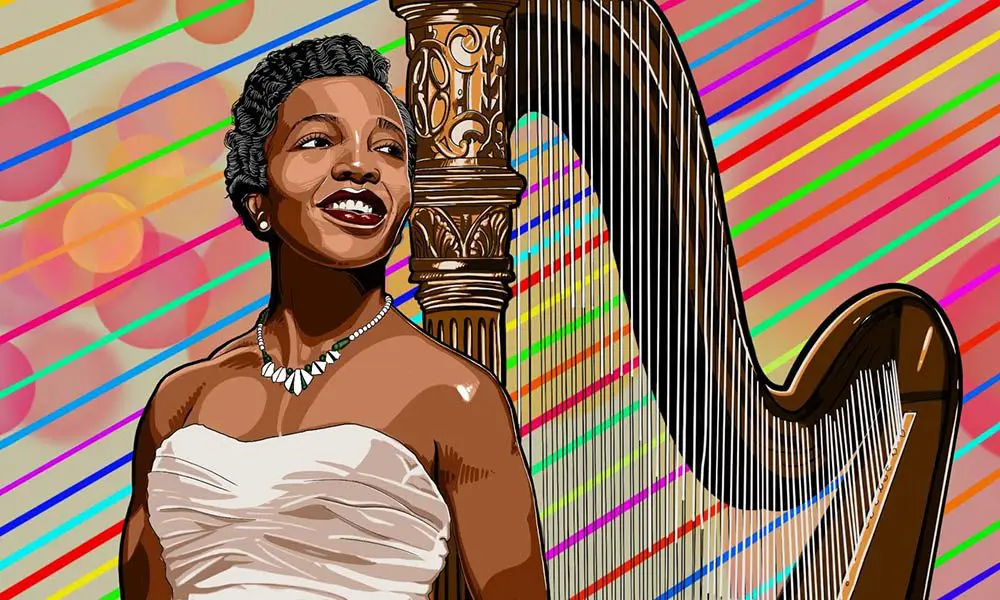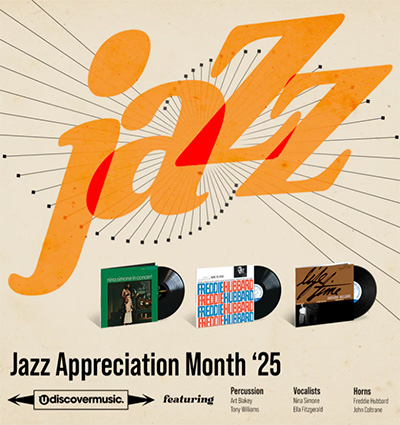Dorothy Ashby: Pioneering Jazz Harpist
The Detroit jazz artist transformed our understanding of what the harp could be.

The harp has long been a part of classical music. Mozart used it, memorably, in his Concerto for Flute, Harp and Orchestra, and the composers of the Romantic Era in Europe featured it heavily. The instrument invokes images of the gentry in music salons or angels among clouds. It wasn’t until centuries later that the harp would be transformed from a solely orchestral instrument to an elegant fixture in the world of jazz. The woman responsible for this innovation is Detroit-born jazz composer, Dorothy Ashby, who released her groundbreaking debut album, The Jazz Harpist in 1957, introducing the world to an entirely new sound and use of the stringed instrument.
Ashby was already well versed in jazz composition and performance before she became a recording artist. Her father, guitarist Wiley Thompson, hosted jam sessions at their house in Detroit with local jazz musicians. Ashby earned her chops by sitting in and playing piano. She continued to study the piano at Cass Technical High School, Detroit’s historical magnet high school that boasts graduates like Donald Byrd, Regina Carter, Zeena Parkins, and Geri Allen. In Cass Tech’s music program she had the opportunity to explore many instruments, one of which was the harp. The school’s Harp and Vocal program was – and still is – esteemed throughout the music world, and Ashby’s eventual teacher was one of the best, a woman named Velma Fraude. “[Velma] was a bit of a pill, but she was a really amazing teacher,” remembered Zeena Parkins in an interview with Pitchfork in 2010. “You had to fall into line, but if you decided to go with her, you really learned how to play the instrument.”
Order the Deluxe Edition reissue of Afro-Harping.
Cass Tech introduced students to mastery-level training where they may have never given the harp a thought, due to lack of exposure or access. Some products of the renowned program decided to pursue their talents in both traditional and more contemporary ways, like alum Pat Terry Ross, who went on to become one of the longest playing members of the Michigan Opera Theater, but was also a regular session player for Motown. Ashby continued studying piano at Wayne State University, but decided on the harp when trying to break into the 50s Detroit jazz scene. It wasn’t easy, but she had allies like flutist Frank Wess, who became a frequent collaborator and arranged her first record deals. During the early 1960s, Ashby and her husband John also hosted a four-hour radio show twice a week where they talked about jazz releases, the problems within the jazz scene, and reviewed performances. She also wrote album reviews for the Detroit Free Press, which allowed her to be a voice and contributor to the conversation around the genre.
But Ashby’s voice was heard most loudly around the world via her music. During her career, she recorded 11 full-length albums as a bandleader. The most celebrated release was 1968’s Afro-Harping. The Wire described it in 2003 as “a humid mix of exquisitely scored soul, jazz and funk… over which Ashby’s playing fans like an ocean breeze.” On the robust 1970 ethno-jazz album The Rubaiyat of Dorothy Ashby, Ashby also played the koto, a 13-stringed Japanese instrument, showcasing just how far out her sound could go.
Dorothy Ashby is credited for being the first artist to translate harp to bebop and jazz in a real way – even before contemporary (and fellow Cass Tech alum) Alice Coltrane started recording with the instrument. But she was also known for manipulating the harp’s sound in various ways, sometimes even imitating the sound of her father’s jazz guitar. Within her experimentation, Ashby’s sound moved relatively linear from the modal sounds of her earliest jazz albums. Her later albums, although unique, were always digestible and elegant. That experimentation and adaptation of sound was likely out of necessity; a few years before her death, Ashby spoke to the multiple layers of her career challenges, stating, “It’s been maybe a triple burden in that not a lot of women are becoming known as jazz players. There is also the connection with Black women. The audiences I was trying to reach were not interested in the harp, period – classical or otherwise – and they were certainly not interested in seeing a Black woman playing the harp.”
Later in her career, she began to feature more and more on pop records, including Stevie Wonder’s “If It’s Magic,” Minnie Riperton’s “Love and Its Glory,” and Peabo Bryson’s I Am Love. Her legacy lives on via hip-hop as well. Ashby has been sampled by Jay-Z, Flying Lotus, Madlib, and many more. More recently, her version of “Windmills of Your Mind” can be heard on “Final Fantasy,” a track on Drake’s 2018 dark opus, Scorpion.
Coltrane (who also went to Cass Tech and learned the harp under the tutelage of Velma Fraude years later) has been celebrated with countless reissues and reappraisals over the past few years. Ashby deserves the same sort of recognition, living as a fixture in jazz and music history. In a way, though, she already has. She is a hero to some of the world’s most respected musicians – including Ross, who credits her career to Ashby allowing her to practice at her home during college breaks – and they keep her legacy alive by integrating her into their personal music expressions. Without Dorothy Ashby, the harp would not sound the way it does today. In a 1970 interview, she said, “A fellow harpist [recently] asked if I were a Grandjany or Salzedo disciple. I had to say I was an Ashby disciple because, after all, I had to create my own technique to get what I wanted from the instrument.” Ashby is a bridge and a marker of where one era of music ended and where music’s exploratory, modern sound begins.
Listen to the best of Dorothy Ashby on Apple Music and Spotify.
This article was originally published in 2020. We are republishing it today in celebration of Dorothy Ashby’s birthday. Black Music Reframed is an ongoing editorial series on uDiscover Music that seeks to encourage a different lens, a wider lens, a new lens, when considering Black music; one not defined by genre parameters or labels, but by the creators. Sales and charts and firsts and rarities are important. But artists, music, and moments that shape culture aren’t always best-sellers, chart-toppers, or immediate successes. This series, which centers Black writers writing about Black music, takes a new look at music and moments that have previously either been overlooked or not had their stories told with the proper context.














